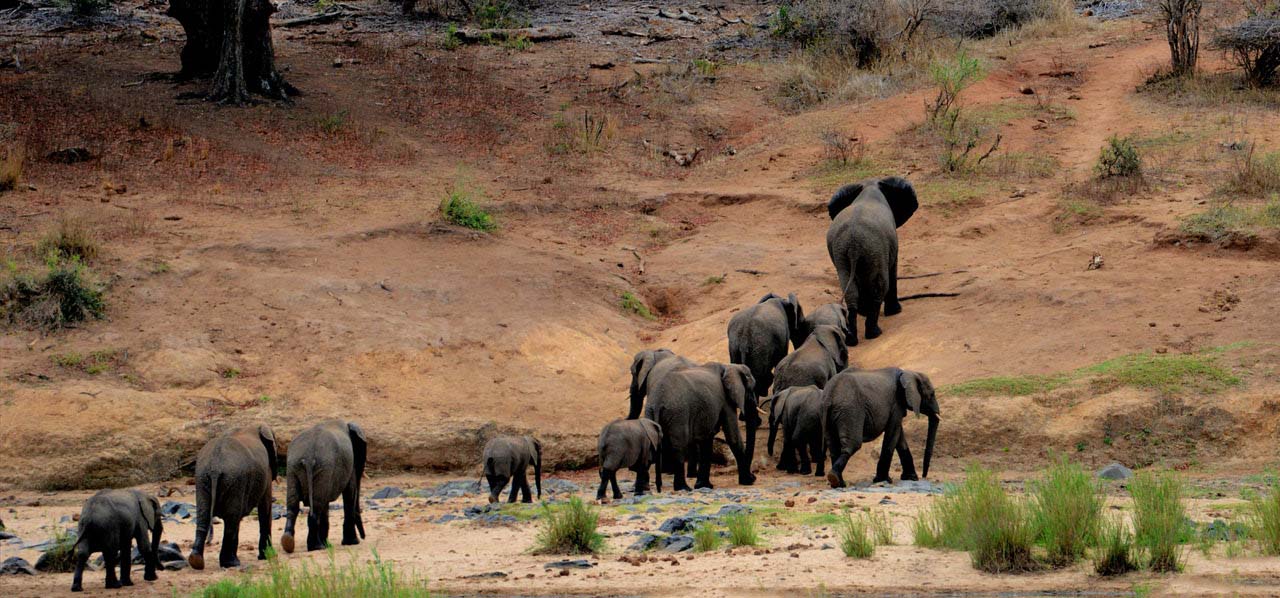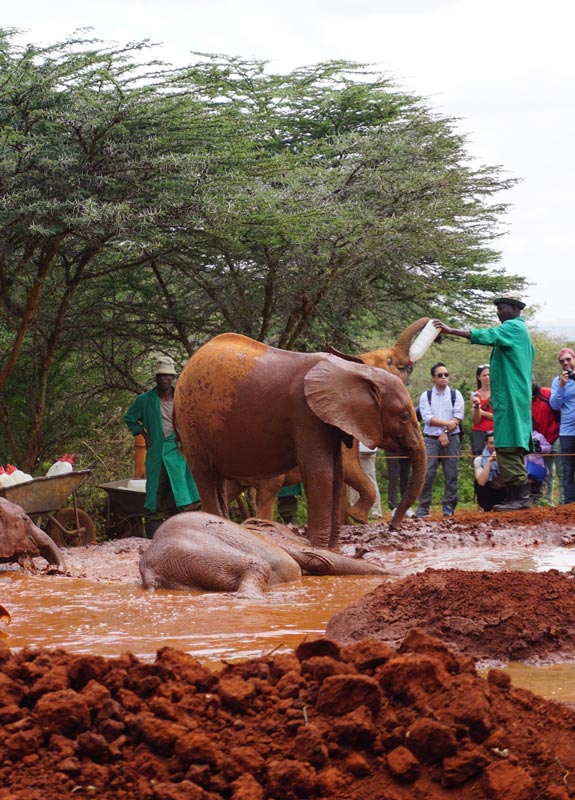

One of the most thrilling experiences of visiting Nairobi, Kenya is the orphan elephant babies’ project at Sheldrick Wildlife Trust. This experience is a must for any African wildlife enthusiast.
Visiting the Orphans’ Project
A spark of excitement fills the air and all eyes are on the horizon. Soon, a faint rustle is heard. Then, at the top of the mound, we see the first elephant baby.

Soon two other elephant orphans follow. They are here for their mid-morning delight: a giant bottle of milk and frolic in the mud. This is the daily 11 a.m. routine at the David Sheldrick Orphans’ Project in Nairobi, Kenya.
Sheldrick Wildlife Trust
The Orphans’ Project is part of the David Sheldrick Wildlife Trust established in 1977 to honor the late David Sheldrick, the founder, and warden of the Tsavo National Park.
The trust holds the distinction of being the most successful orphan elephant rescue in the world and is one of the pioneering conservation organizations in East Africa. The goal is to rehabilitate the orphans back into the wild.

How Were the Elephants Orphaned?
These baby elephants were lost, abandoned and/or orphaned. Reasons vary and fall into several categories: accidents, lack of water, human encroachment and poaching.
Accidents might include a young elephant falling in a well or a mother dying from an injury. Lack of water might result in the mother dying from a drought – especially in the semi-desert areas. Human encroachment might include the baby being separated from the elephant family by humans or humans encroaching on migration paths.
And, the fourth reason, poaching, is still a big problem throughout all of Africa, and Kenya is no exception. It’s estimated that more than 25,000 elephants are killed each year. Poachers kill the mother and the baby is left as an orphan.
In the fall, there were 21 “residents.” Each baby has a name – often named after the region where it was found. They are divided into two groups depending on age, with under 3 years being the dividing line.
The trust’s website also gives full biographies of the baby orphans and introduces the newest resident, Larro. And, good news in the January newsletter: the Orphans’ Project describes the successful return of three females to the wild.

What Do Baby Elephants Need?
Elephant babies are much like human babies: they need food, shelter, “clothing,” touch and toys for stimulation. For nutrition, baby elephants need about 16 quarts of milk daily for their first three years of life. A special formulized milk designed to enhance elephant growth has been developed by the Sheldrick Wildlife Trust.
At the age of 3, gradual weaning off milk begins as the elephant begins to ingest more of nature’s vegetation.
When first found, the babies are often traumatized and need touch and security. The keepers will spend the night in the pen if a baby needs reassurance. In the wild, a baby stays under its mother’s tummy for a year. During that time, the mother touches it with her trunk every 5-10 minutes, giving it reassurance and love.
Caring for the Elephants
The keepers replicate this by encouraging the baby orphan to stay close and snuggle often. Daily walks throughout the complex encourage “curiosity” and further develop the closeness and “family” bonds. At dusk, security is provided at the stockade. At 5 p.m., the orphans return to the security of the shelter.
“Clothing” consists of blankets when the orphan is cold and also natural “mud baths” to protect elephant skin from the sun. The shelter has a variety of toys around the feeding station.
“Toys” for young elephants consist of natural toys such as logs and branches and also more human toys like balls and rubber tires. Barrels are placed throughout the complex to expand the baby’s curiosity.
All orphans start off in Nairobi, then the goal of rehabilitation to the wild is begun. Rehabilitation takes place in only select areas of Kenya: Tsavo East National Park or Kibwezi Forest. Both are huge areas with plenty of vegetation to ensure the elephant’s survival.
The travel journey doesn’t end with the first days of rehabilitation as it takes about five years for orphan elephants to make friends among wild elephants. They also need to learn to live more independently. A keeper stays at the rehab site until it is determined that rehabilitation is a success.

Tips on Visiting the Orphan’s Project:
Bogan Gate, Nairobi National Park, Kenya
Open 11 a.m.-noon daily, except Dec. 25.
Suggestion: Arrive early to be near the front of the line so that you can be right next to the fence of the enclosure. This experience is a highlight of a trip to Kenya and not to be missed.
One of the keepers gives an educational talk describing the orphans and the workings of the site. You will see the orphans being fed from gigantic milk bottles and you will chuckle as they frolic in the mud. Then the keepers encourage the orphans to wander along the fence lines, where you can touch and caress the baby.
“Foster parents” also have another benefit: They can make an appointment to view the 5 p.m. return when the orphans return to the stockade for the night. This appointment must be made in advance. Contact the trust at [email protected]
Author Bio: Jo-Anne Bowen is a freelance travel/food writer who lives in the Pacific Northwest. She was born and raised in Alberta, Canada. As a young professional, she made her first overseas trip for a six-week university class in Italy. That ignited her love of traveling. Since then, she has traveled extensively to Europe, Asia, South Pacific and Central America, as well as most states/provinces in the United States and Canada. She is a member of ITWPA, Travel Massive and TravMedia. Check out her website: http://journeyswithjo-anne.squarespace.com and/or instagram at www.instagram.com/joannesjourneys.
- Travel Guide to Colorado - April 26, 2024
- Travel Guide to Croatia - April 26, 2024
- Top 10 Things to Do in Ireland - April 25, 2024
